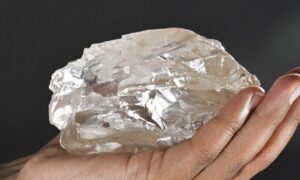A peculiar satellite image recently made the rounds on social media. NASA captured a shot above a desert, but something was amiss. As well as the dunes you might expect, the landscape featured odd blueish formations.
These were actually numerous lakes of many shapes and sizes. The Badain Jaran Desert in China’s Inner Mongolia has both saline and freshwater lakes. Somehow, these have managed to form at the base of mega-dunes in Badain Jaran. But how?
Lack of information
For a phenomenon that is so miraculous, there is little information out there. Mainly, you get a wealth of Chinese websites and a blog or two with a couple of pictures. They don’t reveal much. No one truly knows how or why these lakes exist. But with the information we do have, we can put together some kind of sketch.
First of all, this formidable place ranks as China’s third-largest desert. It is a great rival of the Sahara for its high concentration of mega-dunes. Because of its harshness and remoteness, the Chinese Communist government used it to house “re-education camps” here. Thousands died and were buried under the sands in mass graves.
The name
The name Badain Jaran seems to be a mixture of Mongolian and Tibetan. Some sources say that Jaran derives from a Tibetan word meaning “hell.” Others claim that it refers to the number 60 and represents the number of lakes, albeit inaccurately.
Badain comes from a local oral tradition of a Mongolian shepherd of that name who came to the desert, discovered the lakes, and chose to settle here.

The lakes at the base of the dunes can be either saline or freshwater. Photo: Wirestock Creators/Shutterstock
Badain Jaran is far from hell. Rather, it teems with life. This temperate desert contains more moisture than many deserts around the world. Perhaps because of its unusual character, it has long symbolized prosperity, miracles, and the divine. Thanks to its remarkable sources of water, many fruits grow here. In the past, those crossing the desert often mistook the lakes for mirages.
Formation
Of Badain Jaran’s 144 lakes, only 12 are freshwater. The rest are saline and home to crustaceans and small fish. Half the lakes are year-round while others dry up for part of each year. They vary in depth from 2m to 28m.
The real mystery is where this water comes from. The water table may lurk just beneath the sands. There are natural springs throughout the desert as well.
According to Chinadiscovery.com, water might be located in the southeast of the desert, overflowing from the earth’s crust and creating a hot spring. Underground rocks contain limestone, and therefore calcium carbonate. As the water surfaces, the temperature, pressure changes, and interaction with the calcium carbonate cause it to turn salty.

One of the lakes. Photo: Leo McGilly/Shutterstock
The saline lakes change color from green to brown to pink, thanks to the interactions between chemicals, minerals, cyanobacteria, and sometimes algae blooms.
The freshwater lakes are all seasonal and form from snow and rain. Since the desert experiences heavy snow in winter, the snowmelt creates a layer of fresh water on the surface. Some suggest that runoff from the surrounding mountains also feeds the freshwater lakes. You can drink safely from them.
Features
One of the most intriguing lakes is Yinderitu Lake, which is both salt and freshwater. On one side, 108 springs churn out drinkable and sweet water, leading to its local reputation as a “divine spring.”
Its miraculous reputation has drawn locals to it. According to Yhangyetravel.com, princes hailing from Alxa League (a district of Inner Mongolia) used this lake as a vital stopover on their travels.
The sacredness of the lakes also led some people to build Buddhist temples along the shores. The Sumin Jaran Temple on Badain Lake, the largest of the lot, sat in the sands since 1755 AD, during the Qing Dynasty. It has barely changed and it escaped the chaos of the Cultural Revolution in the 1960s. It became a place of refuge for Buddhists to practice their faith. Sumin Jaran means “inland lakes with temple” in Mongolian.

The Badain Jaran Desert has 144 lakes varying in depth and size. Photo: HelloRF Zcool/Shutterstock
There’s also Bilutu Peak, the highest sand dune in the world. This Everest of the desert measures 1,611m high. From its summit, you can see seven lakes called Haizis, supposedly created by fairies in ancient times. Another famous dune with a lake at its base, the Baori Taolegai, supposedly “roars” on occasion.
The dunes themselves reportedly sing. Researchers believe the noise comes from the electrostatic charge generated by the friction of the sand particles as the wind peels off layers of the sand. The hums, whistles, burps, or booms only happen in summer and last for at most a minute.






